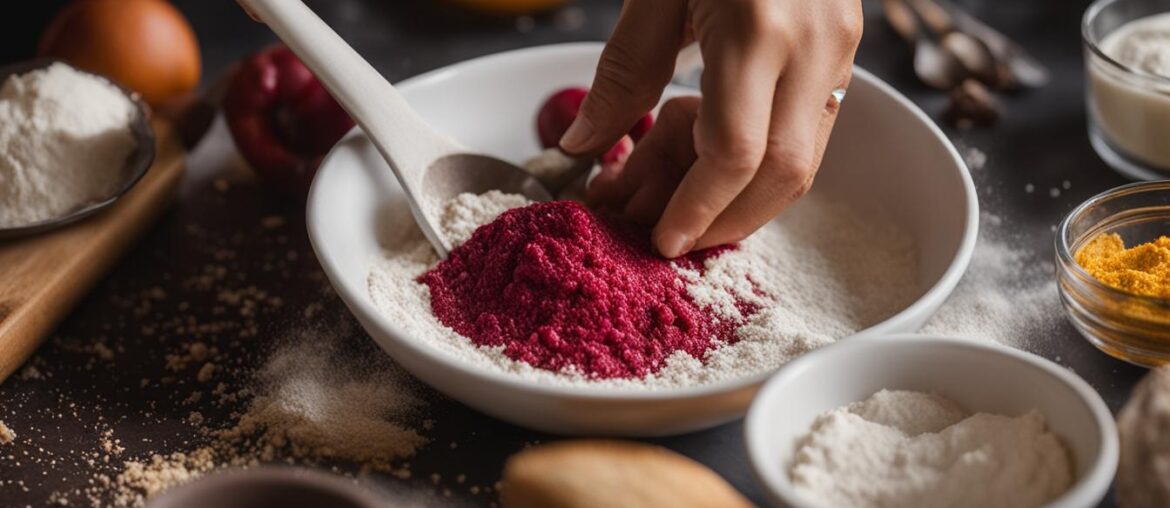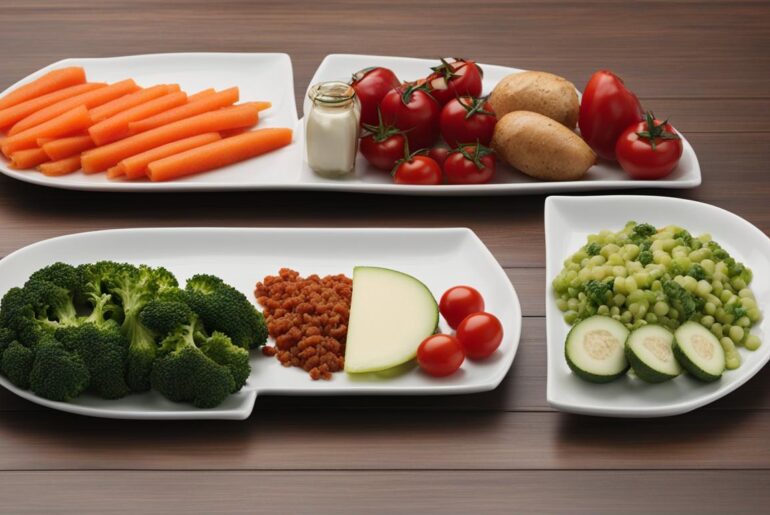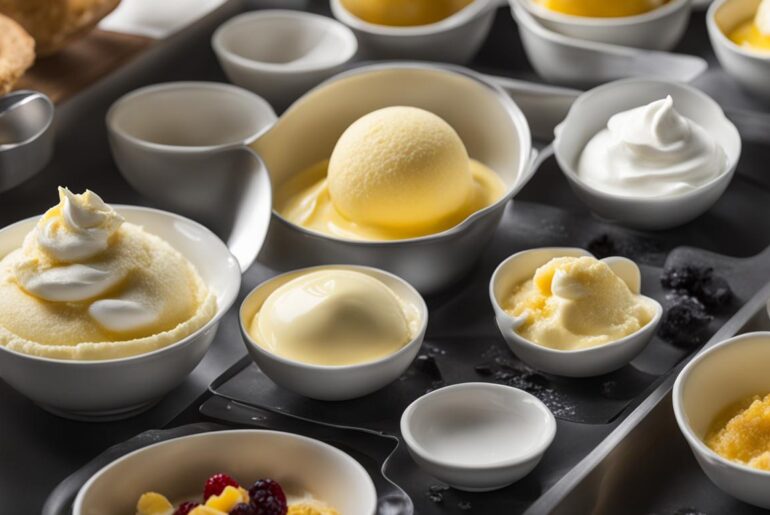As a passionate baker, I understand the joy of creating delicious treats. However, I also recognize the importance of portion control in baking. Whether you’re baking for yourself or others, being mindful of portion sizes is vital for maintaining a healthy lifestyle and achieving your weight management goals.
Portion control is not about depriving yourself of your favorite baked goods; it’s about making conscious choices that align with your health objectives. By understanding the significance of portion control in baking, you can enjoy the treats you love while still taking care of your overall well-being.
Key Takeaways:
- Portion control is crucial for managing weight effectively and achieving sustainable weight loss.
- By practicing portion control, individuals can regulate calorie intake, avoid overeating, and maintain a healthy body weight.
- Implementing portion control offers advantages such as regulating calorie intake, avoiding weight gain, and promoting mindful eating.
- There are various strategies for effective portion control, such as using smaller plates and measuring food portions accurately.
- The American Hospital Association recognizes the importance of portion control in promoting healthy eating and managing weight effectively.
Understanding Portion Control
Portion control is a fundamental aspect of maintaining a balanced and healthy diet. It involves consuming appropriate amounts of food that meet your nutritional requirements, without overindulging. It is important to differentiate between portion control and serving size, as they are often used interchangeably but have distinct meanings.
A serving size refers to the recommended amount of food mentioned on nutrition labels. It provides a standardized measurement for food products, helping consumers make informed choices about their intake. On the other hand, portion control refers to the conscious decision to limit the amount of food you consume, regardless of the serving size.
Implementing portion control techniques offers several advantages, especially when it comes to baking. By regulating calorie intake and portion sizes, you can effectively manage your weight and promote mindful eating. Additionally, it allows you to enjoy your favorite baked treats without feelings of guilt or deprivation.
Portion Control Techniques for Baking
When it comes to baking, portion control techniques can ensure that you savor every bite while maintaining a balanced diet. Here are a few techniques you can apply:
- Use smaller baking pans or dishes: Opting for smaller baking pans or dishes can help control the portion sizes. This way, you can enjoy your baked goods without exceeding your desired portion.
- Measure ingredients accurately: Utilize measuring cups, spoons, or a food scale to precisely measure your ingredients. This will allow you to adhere to specific portion sizes and ensure consistent results in your baked goods.
- Create single-serving portions: Consider baking individual portions, such as cupcakes or cookies, instead of larger desserts. This way, you can enjoy a satisfying treat without the temptation to consume more than necessary.
By incorporating these portion control techniques into your baking routine, you can strike a balance between indulgence and moderation. Remember, portion control is about enjoying treats in moderation, rather than depriving yourself of the joys of baking.
The Relationship Between Portion Control and Weight Management
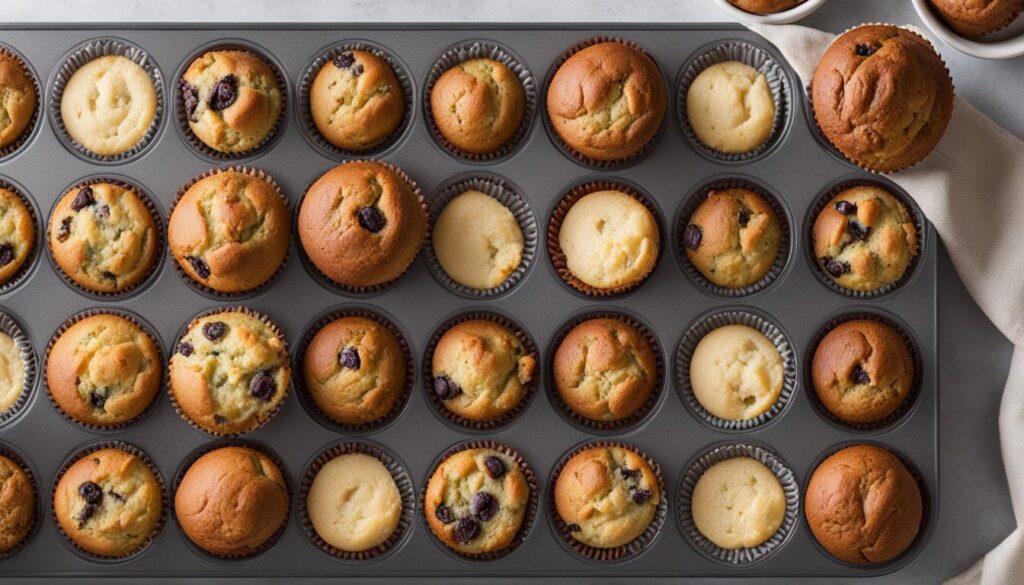
Portion control plays a crucial role in weight management. By controlling the amount of food consumed, individuals can reduce calorie intake, avoid overeating, and achieve long-term weight loss. When it comes to baking, practicing portion control is equally important to maintain a healthy lifestyle. Let’s explore the benefits of portion control in baking and some guidelines to follow.
Benefits of Portion Control in Baking
Portion control is not just about limiting serving sizes; it also offers several benefits for your overall well-being:
- Regulates Calorie Intake: By practicing portion control in baking, you can enjoy your favorite treats while ensuring you consume a reasonable number of calories.
- Avoids Overeating: Controlling portion sizes helps prevent overindulgence, making it easier to maintain a balanced diet.
- Promotes Mindful Eating: Portion control encourages you to be more aware of your eating habits and make conscious decisions about your food choices.
- Supports Weight Management: By managing portion sizes, you can achieve and maintain a healthy body weight, reducing the risk of obesity-related health issues (check out my post on managing portion sizes here).
Integrating portion control into your baking routine can have significant benefits for both your physical and mental health.
Portion Control Guidelines for Baking
Here are some guidelines to help you practice portion control effectively:
- Use Measuring Tools: When baking, rely on measuring cups and spoons to ensure accurate portion sizes (check this post out). This way, you can maintain consistency in each baking batch.
- Be Mindful of Serving Sizes: Understand the recommended serving sizes for different baked goods and aim to stay within those guidelines. It helps to refer to reputable sources or nutrition labels for accurate information.
- Divide and Freeze: If you find it challenging to control portion sizes with freshly baked goods, consider dividing them into individual servings and freezing them for later consumption.
- Experiment with Miniatures: Try baking mini versions of your favorite treats. Mini cupcakes, cookies, or muffins can satisfy your cravings while keeping portion sizes in check.
Once you start implementing these portion control guidelines in your baking routine, you’ll find it easier to enjoy your favorite treats while maintaining a healthy balance.
Image: Illustration depicting the benefits of portion control in baking.
Strategies for Effective Portion Control
When it comes to maintaining a healthy diet, effective portion control is key. By managing the amount of food you consume, you can ensure that you’re getting the right balance of nutrients without overindulging. Here are some strategies that can help you control your portions effectively in baking:
1. Use Smaller Plates and Bowls
A simple trick to create an illusion of larger portions is to use smaller plates and bowls. Research shows that people tend to eat less when their plate appears full, even if the actual quantity is smaller. By reducing the size of your plates and bowls, you can enjoy your baked treats while naturally consuming smaller portions without feeling deprived.
2. Measure Food Portions
Accurate portion sizes are crucial for effective portion control, especially for foods that are challenging to estimate visually. Using measuring cups, spoons, or a food scale allows you to ensure that you’re consuming the recommended portions. This technique is particularly useful in baking, where precise measurements are essential for achieving the desired results.
3. Read Food Labels
Understanding the nutritional composition of the ingredients you use in baking can greatly impact your portion control efforts. By reading food labels, you can make informed decisions about the ingredients you choose, avoiding those that are high in calories, sugar, or unhealthy fats. This knowledge empowers you to create healthier and more portion-controlled baked goods.
By implementing these strategies, you can achieve effective portion control in your baking endeavors. Remember, portion control is not about deprivation but rather about making mindful choices that support your health and wellness goals.
The American Hospital Association’s Perspective on Portion Control
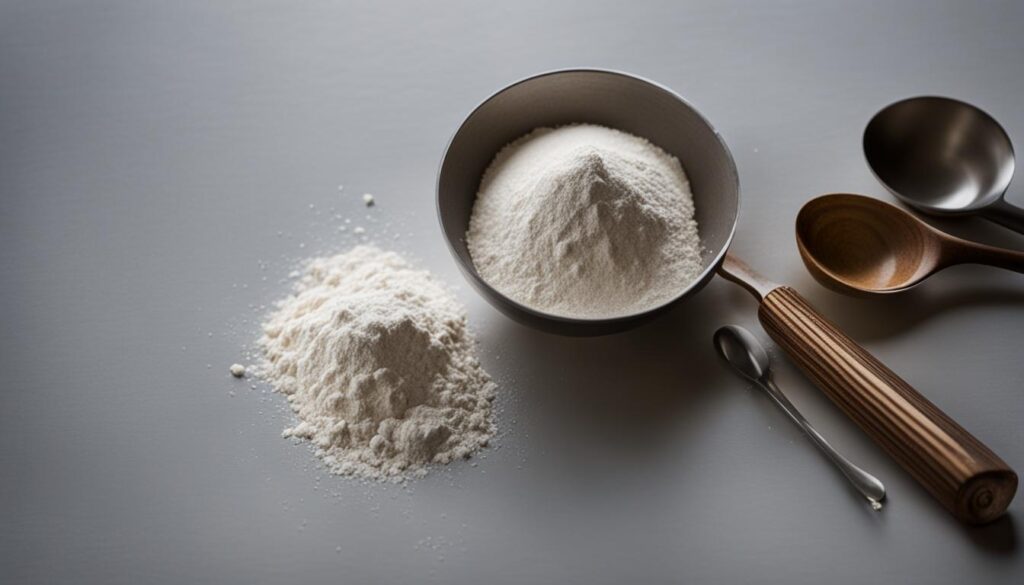
The American Hospital Association is committed to educating the public about the importance of portion control and its role in managing weight effectively. Through various initiatives and collaborations with renowned nutrition experts, we aim to develop evidence-based guidelines and valuable resources that empower individuals to make informed decisions about their food choices.
By integrating portion control education into healthcare practices, we strive to support healthcare professionals in assisting their patients in achieving long-term success in managing weight. Our focus is on providing practical tips and strategies that can be implemented in everyday life, including specific portion control tips for baking.
In recognizing the impact of portion sizes in baking, we emphasize the significance of understanding portion control techniques for baking. By navigating portion sizes effectively, individuals can better regulate their calorie intake and ensure that each serving aligns with their dietary goals. Below, we have compiled some key portion control tips for baking:
- Use smaller baking pans or muffin tins to create smaller individual portions.
- Measure ingredients precisely using measuring cups or a kitchen scale to maintain consistency in portion sizes (check out my post on using measuring cups here).
- Divide baked goods into individual servings immediately after they have cooled to avoid overindulging.
- Experiment with ingredient substitutions to reduce the caloric content of your baked goods without compromising taste.
- Opt for healthier ingredients, such as whole wheat flour or natural sweeteners, to create baked goods with better nutritional profiles.
By following these portion control tips for baking, individuals can enjoy their favorite treats while still maintaining a balanced and mindful approach to their overall dietary intake.
As the American Hospital Association, we are committed to providing comprehensive guidance on portion control and portion sizes in baking. By prioritizing portion control and incorporating it into everyday life, individuals can make positive lifestyle changes that contribute to their overall well-being.
The American Hospital Association’s Portion Control Guidelines for Baking
| Portion Control Technique | Description |
|---|---|
| Use smaller baking pans or muffin tins | Creating individual-sized portions by using smaller baking pans or muffin tins. |
| Measure ingredients precisely | Using measuring cups or a kitchen scale to ensure accuracy in portion sizes. |
| Divide baked goods immediately after cooling | Splitting baked goods into individual servings right after they have cooled to prevent overeating. |
| Experiment with ingredient substitutions | Exploring alternative ingredients to reduce calorie content while maintaining taste. |
| Opt for healthier ingredients | Choosing whole wheat flour and natural sweeteners for more nutritious baked goods. |
Overcoming Portion Control Challenges
While practicing portion control is crucial for effective weight management, it is not without its challenges. Various social and environmental factors can make it difficult to adhere to recommended portion sizes, especially when dining out (check out my post on recommended portion sizes here). The temptation of larger serving sizes can lead to unintentional overeating and hinder progress. Additionally, emotional eating can pose significant obstacles to maintaining portion control.
“Food is often used as a coping mechanism for emotional stress or boredom. It becomes a challenge to differentiate between physical hunger and emotional hunger, leading to overeating and losing control over portion sizes.”
Fortunately, there are strategies and techniques that can help individuals overcome these challenges and stay on track with their portion control goals.
1. Developing Coping Mechanisms
One effective way to overcome emotional eating habits is to develop alternative coping mechanisms. Engaging in activities such as exercise, meditation, or talking to a trusted friend can help redirect emotions and prevent turning to food for comfort. Identifying the triggers that lead to emotional eating and finding healthier ways to address them is key to breaking this cycle.
2. Seeking Support
Seeking support from health professionals or joining support groups can provide valuable guidance and encouragement throughout the portion control journey. Registered dietitians or nutritionists can offer personalized recommendations and strategies tailored to individual needs. Support groups offer a platform for individuals to share experiences, learn from others, and stay motivated.
3. Lifestyle Change Perspective
Viewing portion control as a lifelong commitment and lifestyle change, rather than a short-term fix, is crucial for long-term success. Embracing small, sustainable changes over time can lead to lasting habits that support healthy eating and portion control. It’s important to remember that progress takes time and patience.
By implementing these techniques and approaching portion control challenges with determination and resilience, individuals can overcome obstacles and achieve their desired health and weight management goals.
| Portion Control Challenges | Strategies |
|---|---|
| Social and environmental influences | Practicing mindfulness when dining out, sharing meals, or asking for smaller portions. |
| Emotional eating | Developing coping mechanisms, seeking support, and differentiating between emotional and physical hunger. |
Conclusion
Effective portion control in baking is essential for managing weight and promoting overall health. By being mindful of portion sizes, individuals can control their calorie intake, avoid overeating, and develop healthy eating habits (see my post here). It is crucial to incorporate portion control techniques into daily routines to achieve sustainable weight management.
The American Hospital Association recognizes the significance of portion control and emphasizes the importance of education and collaboration with nutrition experts. By seeking support when needed and staying informed about portion control guidelines, individuals can make informed decisions about their food choices and successfully manage their weight.
Implementing portion control strategies, such as using smaller plates and measuring food portions, can support effective portion control in baking (check this post out). These techniques help individuals consume appropriate amounts of food without feeling deprived. By treating portion control as a lifestyle change and staying committed to long-term weight management goals, individuals can enhance their overall well-being and achieve a healthier lifestyle.

